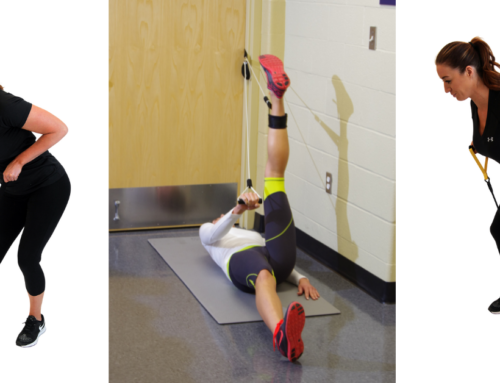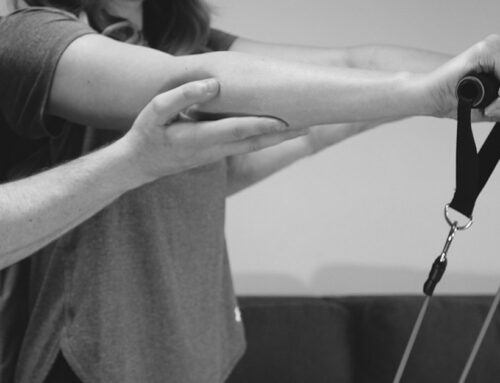The Benefits of Resistance Cords for Safe and Effective Workouts
When it comes to maintaining and improving fitness, safeguarding the health of our bones and joints is crucial. Traditional weightlifting and high-impact aerobics can sometimes pose risks of injury and undue stress, particularly for those with pre-existing joint issues or those new to exercising. Resistance cords offer a joint-friendly alternative that provides effective workouts without compromising safety. In this blog post, we’ll explore how resistance bands protect bones and joints and why they’re ideal for all fitness levels.
Controlled, Joint-Friendly Movements
One of the key advantages of resistance cords is their ability to facilitate controlled, joint-friendly movements. Unlike free weights, which can place sudden and heavy loads on joints, resistance cords provide a gradual increase in tension as they stretch. This characteristic ensures that the muscles are engaged throughout the full range of motion without the risk of jerking movements that can strain the joints.
For example, when performing a bicep curl with a resistance cord, the tension gradually increases as you lift, providing a smooth and consistent load. This continuous tension helps in maintaining proper form and reduces the risk of overextending or putting excessive pressure on the joints.
Lower Impact than Free Weights and High-Impact Aerobics
Resistance cord exercises are generally lower in impact compared to heavy weights and high-impact aerobic activities. This low-impact nature makes resistance cords an excellent choice for individuals of all fitness levels, including those recovering from injuries or with chronic joint conditions like arthritis.
High-impact exercises, such as running or jumping, can place significant stress on the joints, particularly the knees and hips. Similarly, lifting heavy free weights without proper technique can lead to joint strain or injuries. Resistance bands and cords, on the other hand, offer a safer alternative by providing resistance without the added weight, reducing the overall impact on the joints.
Customizable Resistance Levels
One of the most appealing features of resistance bands and cords is their versatility in providing various levels of resistance. Whether you’re a beginner or an advanced athlete, you can select a resistance that matches your fitness level. This customization ensures that you can perform exercises without risking sudden, heavy loads that could stress your joints.
For beginners, lighter resistance can help in building strength and endurance without overwhelming the joints. As you progress, you can gradually increase the resistance to continue challenging your muscles while still maintaining joint safety. This progressive overload is crucial for muscle growth and strength development, all while keeping joint health in mind.
Suitable for Individuals with Joint Issues
MediCordz® Resistance cords are particularly beneficial for individuals with joint issues or those undergoing rehabilitation. The controlled, smooth movements facilitated by our resistance cords help in strengthening the muscles around the joints, providing better support and stability. This increased support can alleviate pain and improve joint function over time. With 10 resistance levels available, you are able to work at the resistance level suitable for you.
Resistance cord exercises targeting the quadriceps and hamstrings can help in reducing knee pain by strengthening the muscles that support the knee joint. Similarly, resistance cord workouts focusing on the shoulders can enhance shoulder stability and reduce the risk of injuries like rotator cuff tears.
Tailoring Exercises to Avoid Excessive Strain
The adaptability of resistance cords and bands allows for exercises to be tailored to avoid excessive strain on the joints. For example, seated or lying exercises can be performed to reduce weight-bearing stress on the lower body joints. Resistance cords can also be anchored to various points, enabling a wide range of motion and exercise variations that can be adjusted to the individual’s needs.
Incorporating resistance cord exercises such as banded squats, chest presses, and rows can provide a comprehensive workout while minimizing joint strain. These exercises engage multiple muscle groups and promote overall strength and stability, contributing to better joint health.
Conclusion
Protecting our bones and joints is essential for maintaining long-term fitness and overall health. Resistance cords offer a safe, effective, and versatile way to engage in strength training without the risks associated with heavy weights and high-impact aerobics. With their controlled, joint-friendly movements and customizable resistance levels, resistance cords are perfect for all fitness levels and particularly beneficial for individuals with joint issues.
Whether you’re new to exercising or an experienced athlete, incorporating resistance cords into your workout routine can help you build strength, improve flexibility, and protect your joints. Remember to choose the appropriate resistance level and focus on proper form to maximize the benefits and ensure a safe, effective workout.





